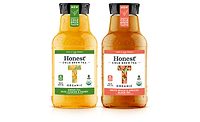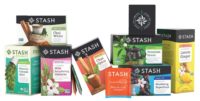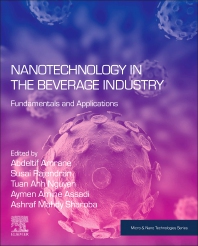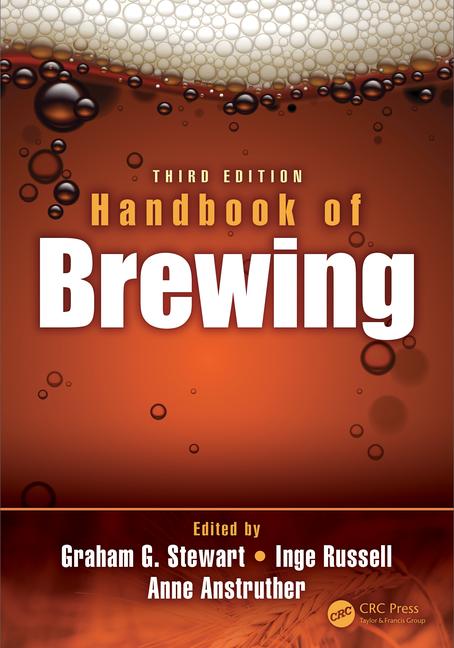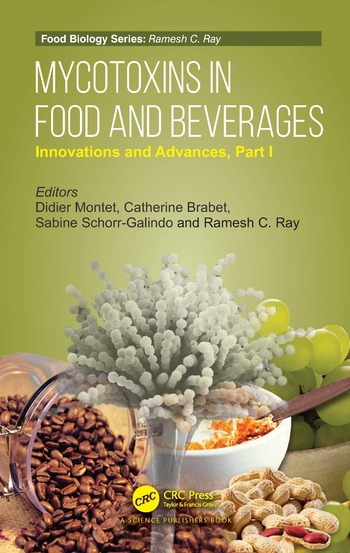Tea's health halo boosts popularity as beverage ingredient
Beverage-makers use tea to add benefits to other beverages



Energy teas are seeing an increase in interest from consumers, says BI Nutraceuticals’ Randal Kreienbrink. (Image courtesy of Red Rose Tea)

Delivery systems like liquid concentrates can benefit from using tea essences because the product's concentrated formula makes it difficult to incorporate large amounts of tea, says Frank Del Corso of Allen Flavors. (Image courtesy of Nestlé Waters North America)




In the CBS drama “The Mentalist,” consultant Patrick Jane surveys the crime scene looking for clues that others might have overlooked. But the pesky former psychic also seems to be on the hunt for more at every crime scene: a cup of tea. As the fictional character can’t seem to go without his cup of tea, that same affinity seems to be popping up in the consumer packaged goods (CPG) market. According to Chicago-based Mintel’s July 2013 “Tea and RTD Teas – US” report, tea and ready-to-drink (RTD) tea sales increased nearly 5 percent in 2012 for just under $7 billion in sales. The market research firm estimates that sales for 2013 will increase 4.1 percent to approximately $7.3 billion. It also anticipates continued annual growth with ranges from 3.8 percent in 2014 to 3.2 percent in 2018.
One of the factors that Mintel credits for tea’s annual growth is its healthy reputation. Suppliers of tea ingredients echo similar sentiments.
“The utilization of tea ingredients in beverages is increasing,” says Randal Kreienbrink, director of marketing for BI Nutraceuticals, Long Beach, Calif. “… This rise in utilization can be attributed to the consumer’s increased awareness of overall health. Teas have long been associated as healthy, especially for their antioxidant properties, causing consumers to not only switch from unhealthier drinks to teas but also [to] serve as an alternative to consuming pills.”
But tea ingredients and flavors aren’t only reserved for the tea category. According to Mintel’s Global New Products Database, 452 beverages have been released from January to October 2013 and include hybrid products in addition to the traditional tea and RTD tea beverages.
“Tea is a highly utilized actor in the world of beverages,” says Gary Vorsheim, vice president of extract sales for Martin Bauer Inc., Secaucus, N.J. “While tea can be the star of iced teas, it can also provide a supporting role within herbal RTDs, energy drinks, juices as well as many food items. We see the role of tea expanding every year with increased use in all beverage categories.
“Tea is not just an ingredient, but it is a beverage in its own right with a strong following around the globe, being the second most-consumed beverage in the world after water,” he continues. “With tea having such a long and strong heritage in the beverage arena, it should be no surprise that most product developers look to use tea in beverages of all types.”
Although tea ingredients tend to be used as primary ingredients in beverages, new opportunities are opening up for them.
“The majority of beverage manufacturers continue to use tea as the main ingredient,” says Todd Zaniewski, sales director for Finlay Tea Solutions, Florham Park, N.J. “This is evidenced by continued launches of RTD iced teas in the marketplace. However, we’ve seen growth of tea where it has taken second billing or [is] used to help bolster a product concept. Some examples include half-and-half products (half lemonade and half tea), as well as juice-tea blends. In both cases, we believe tea’s healthy proposition is being used to help drive consumer purchases.”
What’s your function?
Part of the healthy halo that consumers associate with tea ingredients comes from the functional properties that they can take on.
“The functional beverage market is growing in general, and teas are a growing market in this category,” says Cecilia McCollum, executive vice president of Blue California, Rancho Santa Margarita, Calif. “Green tea, for example, is well known for its unique properties — relaxation, antioxidants, mild taste — and it contains less caffeine. Therefore, flavored teas may be a consumer’s first choice.”
McCollum adds that, in general, teas can be a suitable format for added functionality like increasing energy, reducing stress or both.
“Consumers want to reduce stress naturally and safely and increase energy without negative side effects while improving mood and cognitive function,” she says. “It’s what we all need.”
To meet this demand, Blue California offers its L-TeaActive, a natural plant extract that is kosher and halal certified. “L-TeaActive can be added to functional teas to reduce stress and anxiety safely and naturally as well as for added energy and mental alertness,” McCollum says.
Tea ingredients also can offer benefits to beverages that might not otherwise carry the health claims that commonly are associated with tea ingredients.
“First and foremost, tea ingredients contain an abundance of antioxidants and phytochemicals, giving consumers health benefits they otherwise would not receive in other beverages,” BI Nutraceuticals’ Kreienbrink says. “For formulators, tea is a versatile ingredient, since it is consumed both hot and cold. Incorporating tea into other beverages is a great way to differentiate a product without using too ‘out-of-the-box’ ingredients. Several different beverages, such as juice drinks, carbonated soft drinks, energy drinks and even some sports drinks, are now including tea to add flavor, function and/or consumer appeal.”
Angela Lantman, applications manager for coffee and tea for Synergy Flavors, Wauconda, Ill., adds that tea ingredients are a natural caffeine source, which makes it an attractive addition to beverages seeking a natural energy source.
Formulating the right mix
When opting to work with tea ingredients, beverage-makers consider a number of factors to determine the best use in their end-product. One of the first considerations is tea varietals.
“We continue to see black tea lead the way in popularity within the U.S.,” Finlay’s Zaniewski says. “However, much of the recent growth and line extensions have revolved around green tea. This is likely a result of the amount of scientific research conducted on green tea and its links to various health benefits.”
Zaniewski adds that because of this, Finlay expects to see more marketers leverage the health and wellness credentials of tea, which could potentially drive growth and interest among green teas and high-quality black teas.
BI Nutraceuticals’ Kreienbrink notes that consumers also are taking an interest in teas that are outside of the mainstream varietals.
“Black tea and green tea are particularly popular in the United States because of their historical use and taste familiarization, but oolong tea and white tea are also gaining popularity as consumers become increasingly accepting and curious of unique ingredients,” he says. “Energy teas containing guarana, ginseng, etc., are also seeing a rise in interest as individuals look for different ways to increase energy beyond the traditional energy drink.”
In addition to deciding what varietal of tea to utilize during formulation, beverage manufacturers have a number of ingredient formats to consider as well.
“When we talk about making tea beverages, there are a few categories of tea ingredients that can be employed: leaf tea, tea extract powders/liquids, tea essences and tea concentrates,” Martin Bauer’s Vorsheim says. “All four of these ingredients are widely used in North America and all can provide a quality beverage for the consumer.”
Vorsheim adds that the ability for an ingredient to constitute a quality beverage depends on the quality of the ingredient. For example, when using leaf tea for a fresh-brewed RTD tea, beverage-makers can produce a high-quality beverage if they use a quality tea leaf and brew it correctly, he says. However, if the processing method and ingredient quality are below standards, the adverse can happen, Vorsheim explains. He adds that the variability of leaf tea is among the reasons why tea extracts are a more popular choice.
“Tea extracts have been and continue to be the mainstay in the toolbox for product developers working on RTD and dry-mix beverages that contain tea,” Vorsheim says. “Tea extracts from most of the larger producers provide consistent quality and a wide range of options for all tea applications, which allows the developer to focus all [of] their attention on the beverage and not on how to make a batch of tea.”
Greg Robertson, president and founder of Teawolf, Pine Brook, N.J., echoes similar sentiments: “Tea extracts are without question the most popular of all the tea ingredients. Beverage manufacturers use them as the foundation for their beverages, needing only to add water, sweetener and maybe a flavor to create a great-tasting tea beverage.”
However, the company has seen a greater demand recently for its liquid tea extracts because of their ease of use and high-quality flavor profile, he adds. Teawolf offers a line of liquid tea extracts that it imports from South America, Indonesia, South Africa, West Africa and numerous other countries for its extracts, distillates, essences, concentrates, blends and more.
Flavorful options
The growth of the tea market contributes not only to the growth of tea extracts and concentrates but also to tea essences.
“It seems that the tea category expands and grows year over year,” says Cathianne Leonardi, senior flavorist with Allen Flavors, Edison, N.J. “Tea offers a wonderful opportunity for flavorists to pair its innate characters with flavors that potentiate taste. Complexities resulting from diversity offer consumer goods targeted taste experiences resonating with specific brands.”
Among those CPG products that can offer opportunities for tea essences/flavors are products like water enhancers or liquid concentrates, says Frank Del Corso, director of product development with Allen Flavors.
“Since the [water enhancers] system is so concentrated, it is very difficult to incorporate a large amount of tea into these formulas, so a tea flavor is a good choice to use,” he says.
Del Corso adds that consumer awareness of tea as a healthy ingredient also offers benefits, but tea essences don’t have some of the same limitations that other tea ingredients might have.
“Tea flavors allow us to create a unique flavor profile consistently and are not impacted by natural events nearly as much as using leaf tea would,” he says. “As a natural crop, the supply of tea is more sensitive to variations in weather, political issues in the country where it is grown, and supply and demand issues. Flavors are not as impacted by these events, and there are more opportunities to reformulate with other ingredients with little to no impact upon the final product in the event of a flavor component supply issue.”
In addition to their ease of availability, many tea essences also work well when paired with other flavors, experts note.
“Hay, floral and slight wintergreen characters found in green tea complement sweet, creamy and floral notes found in honey,” Allen Flavors’ Leonardi says. “Black tea greatly varies depending on the processing of the tea leaf. Aromatics can include fresh, floral, caramelized, earthy and woody notes.”
To meet the number of tea essence combinations, Allen Flavors offers a number of products. Its TeaEssentials are a blend of tea essences selected to deliver a range of full-flavor tea profiles, Leonardi explains. The company also has SpecialTeas with tea flavor top notes, and TeaMates, which include uncommon tea varietals paired with non-tea flavor, she adds.
Douglas Rash, group vice president of global sales for Treatt plc, Bury St. Edmunds, England, notes that lemon is a traditionally popular pairing with black tea, but more modern flavor pairings also are emerging.
“More of the up-and-coming products we’re starting to see [include] a combination with superfruits where you can accentuate the antioxidants and the health perceptions; so you might see black tea with acai and blueberry or green tea with orange … or acerola, for example,” he says.
Suzanne Niekrasz, director of marketing commun-ications for Robertet Flavors, Piscataway, N.J., adds that demographics also play a role in flavor pairings.
“Millennials in particular are also drawn to more exotic offerings,” she says. “For instance, a white tea with goji berry will be very appealing, driven by a desire to share, and possibly champion, their new flavor discoveries with friends and family.”
But in order to deliver high-quality tea flavors, many suppliers are developing new flavor systems to deliver that taste in healthier products, Niekrasz says.
“The quest to harmonize flavor ingredients in various applications and with many available sweeteners, vitamins and minerals, and other functional ingredients has had a huge impact on R&D efforts and will continue to drive technology innovation for many years to come,” she says.
Robertet offers its Essential Balance line of natural flavor modulators to aid in creating flavor harmony, she explains.
However, another challenge affecting tea essences is the changing landscape of sweetener systems, Treatt’s Rash says.
“The biggest factor in beverages right now is sugar reduction,” he says. “However, if you look at tea in general, that has proven to be a challenge.”
For example, beverage manufacturers that are looking for a clean label might turn to stevia or, more specifically, the steviol glycoside rebaudioside A (Reb A), Rash explains. However, the astringent back-notes sometimes associated with tea can be aggravated with some of the off-notes associated with stevia. To combat this problem, Treatt launched TreattSweet Tea last year. The product is designed to soften the flavor profile that is associated with Reb A, he says.
Looking for a reprint of this article?
From high-res PDFs to custom plaques, order your copy today!





